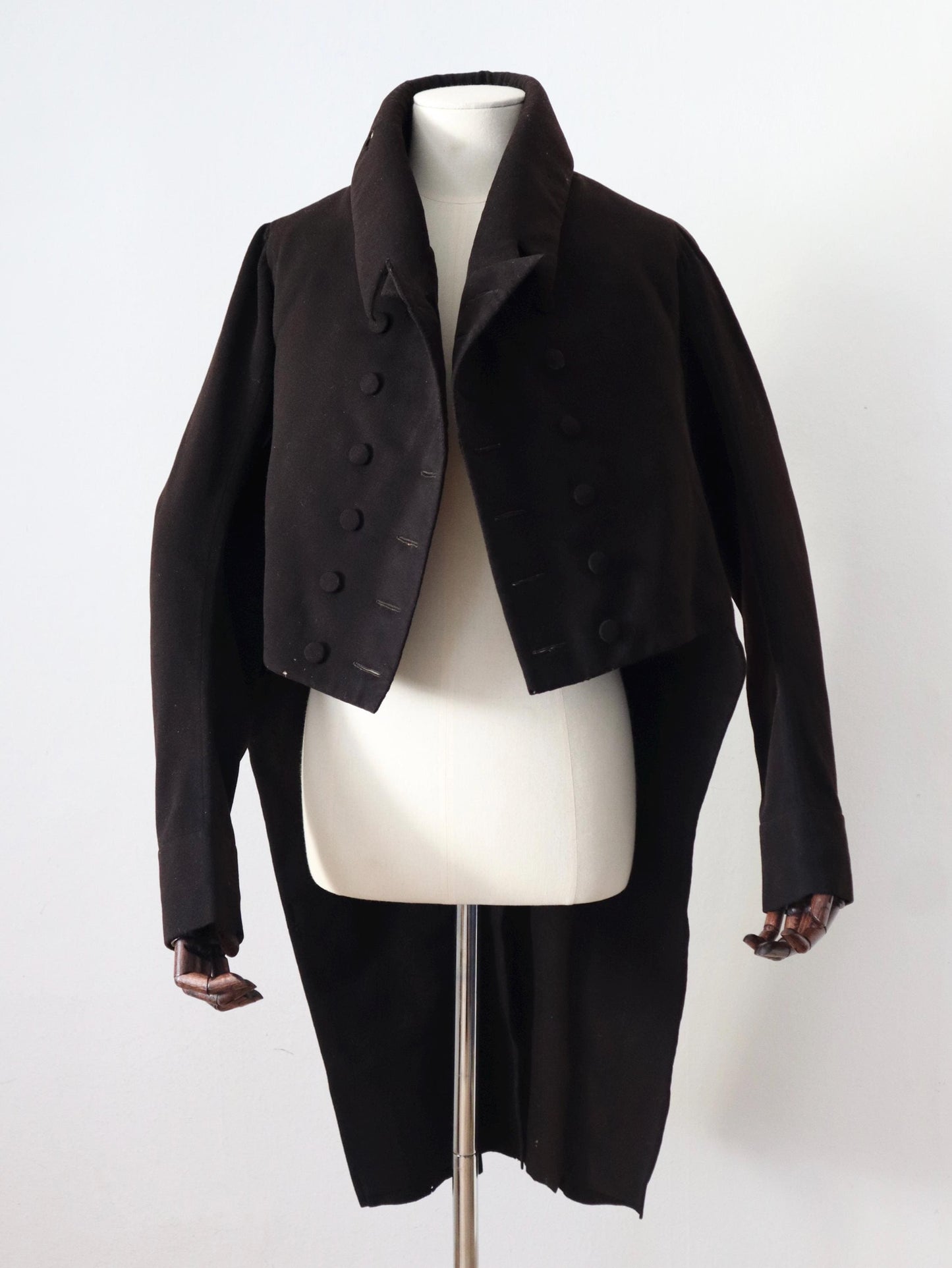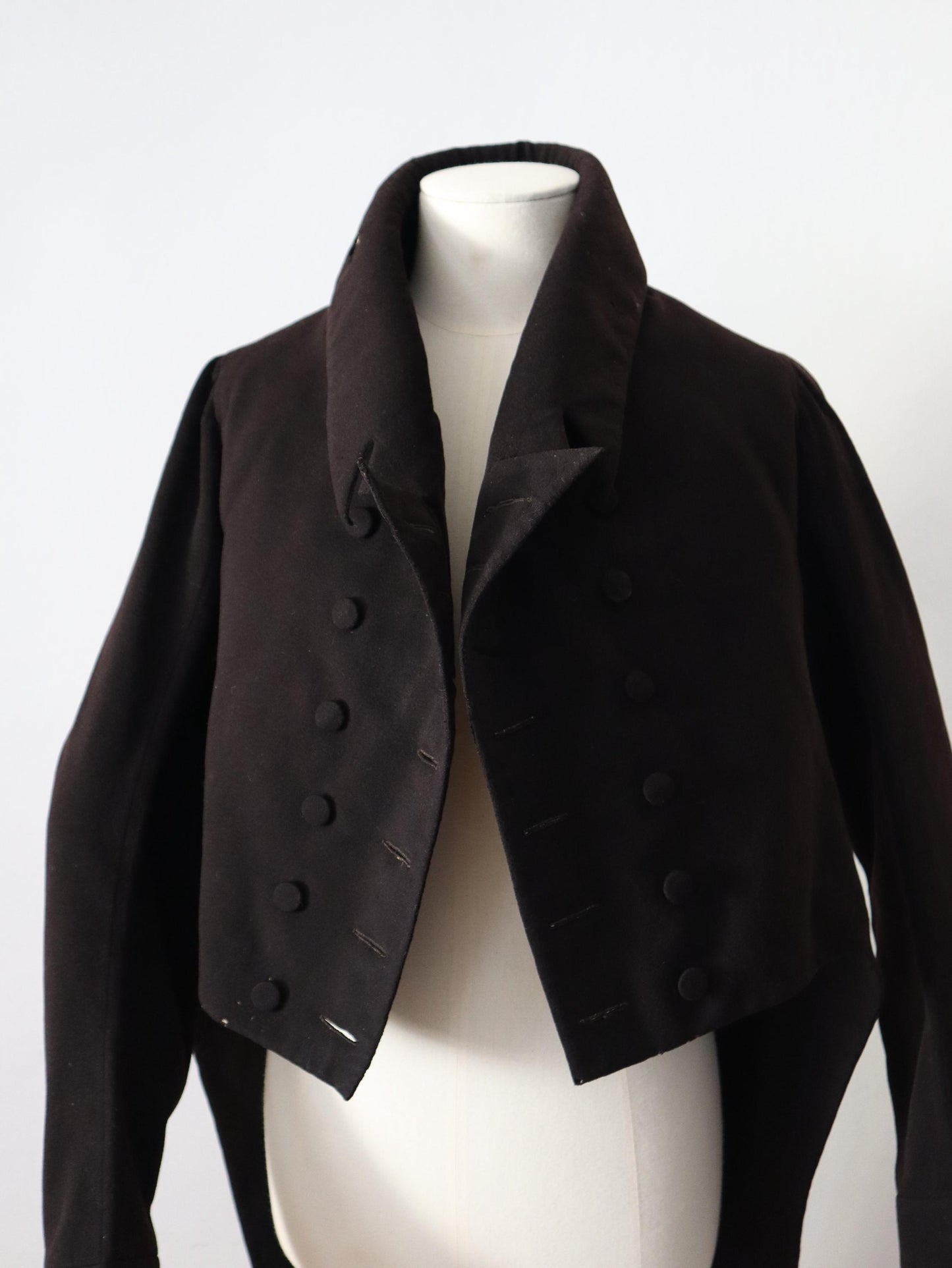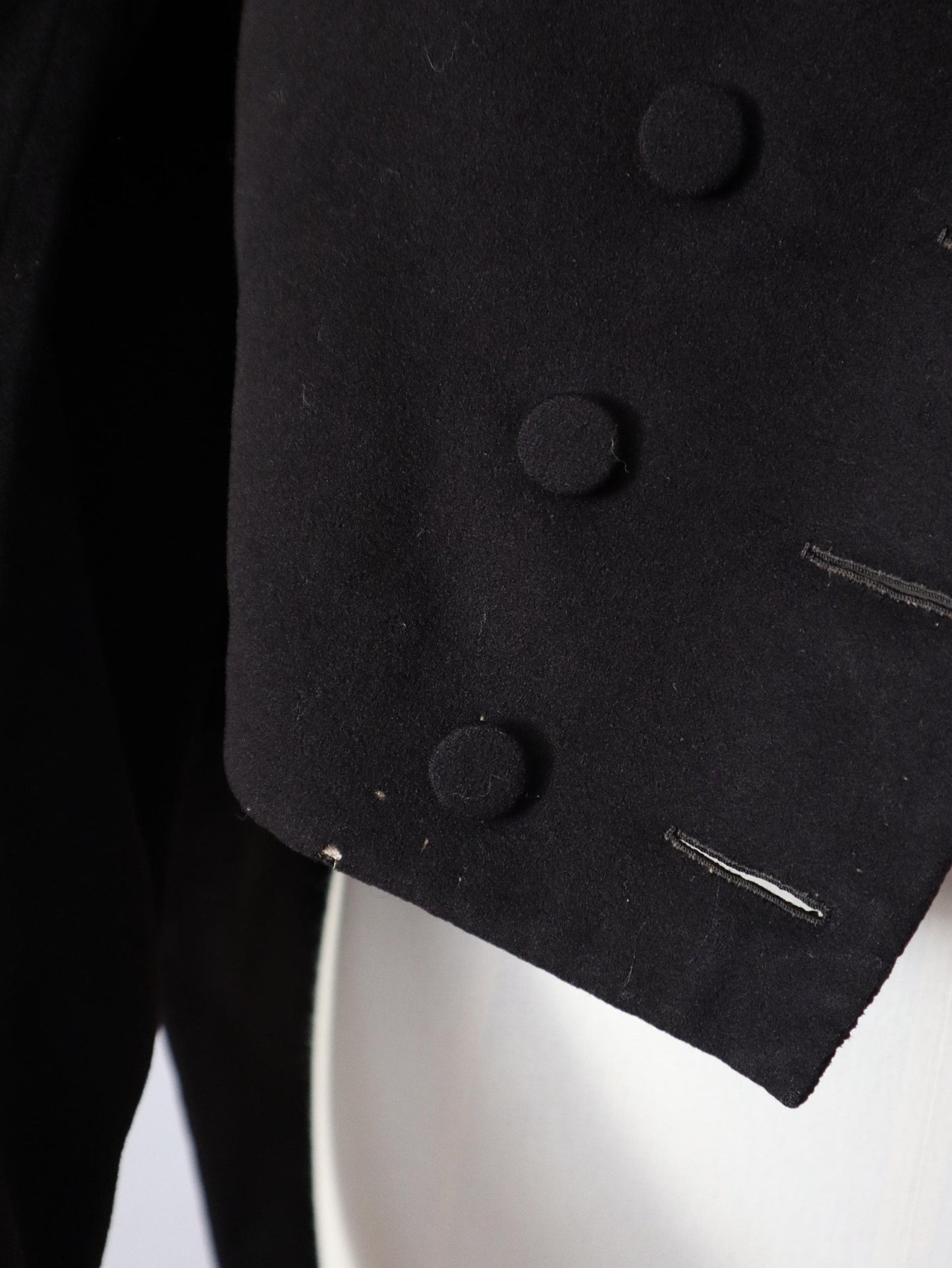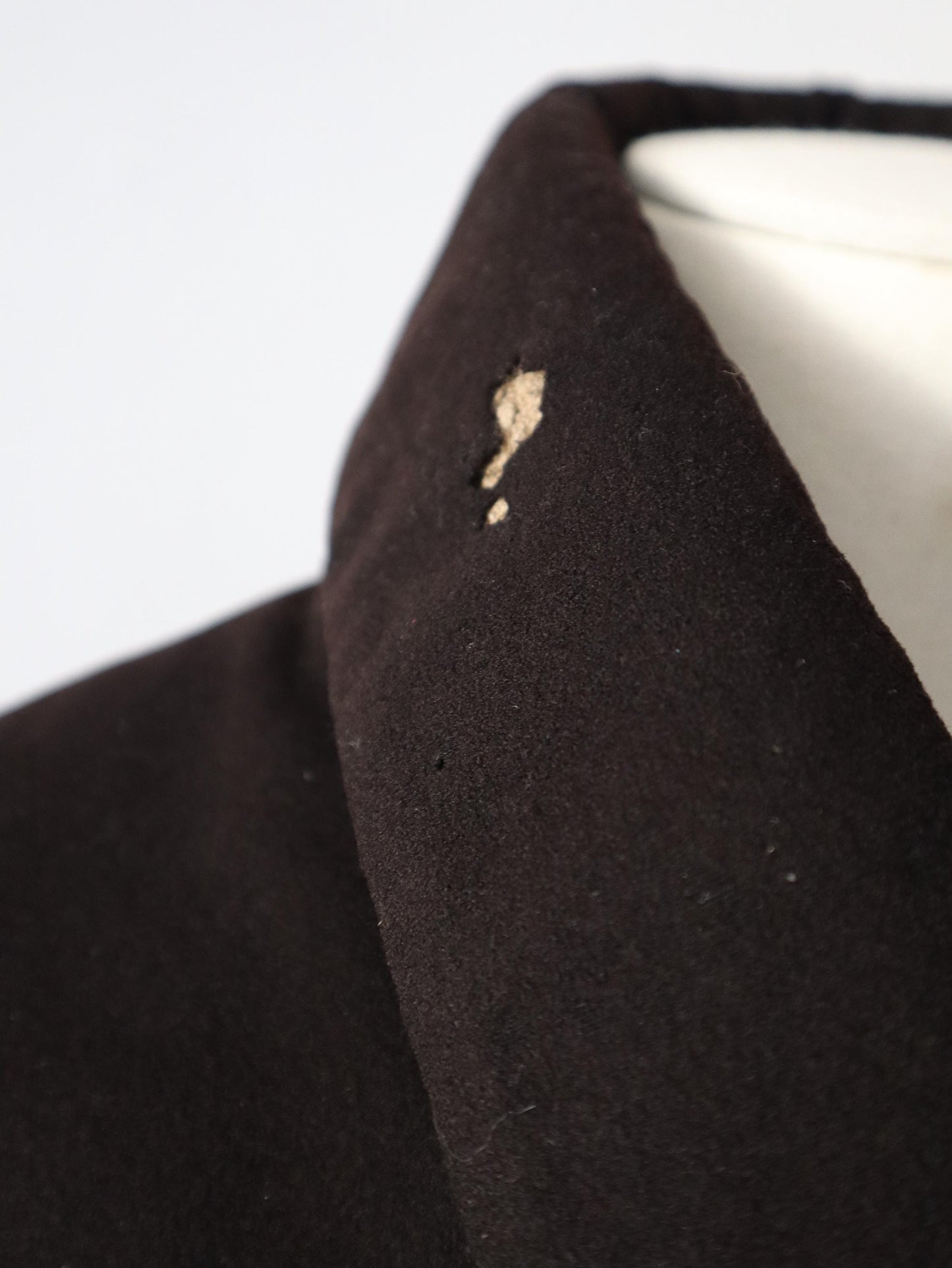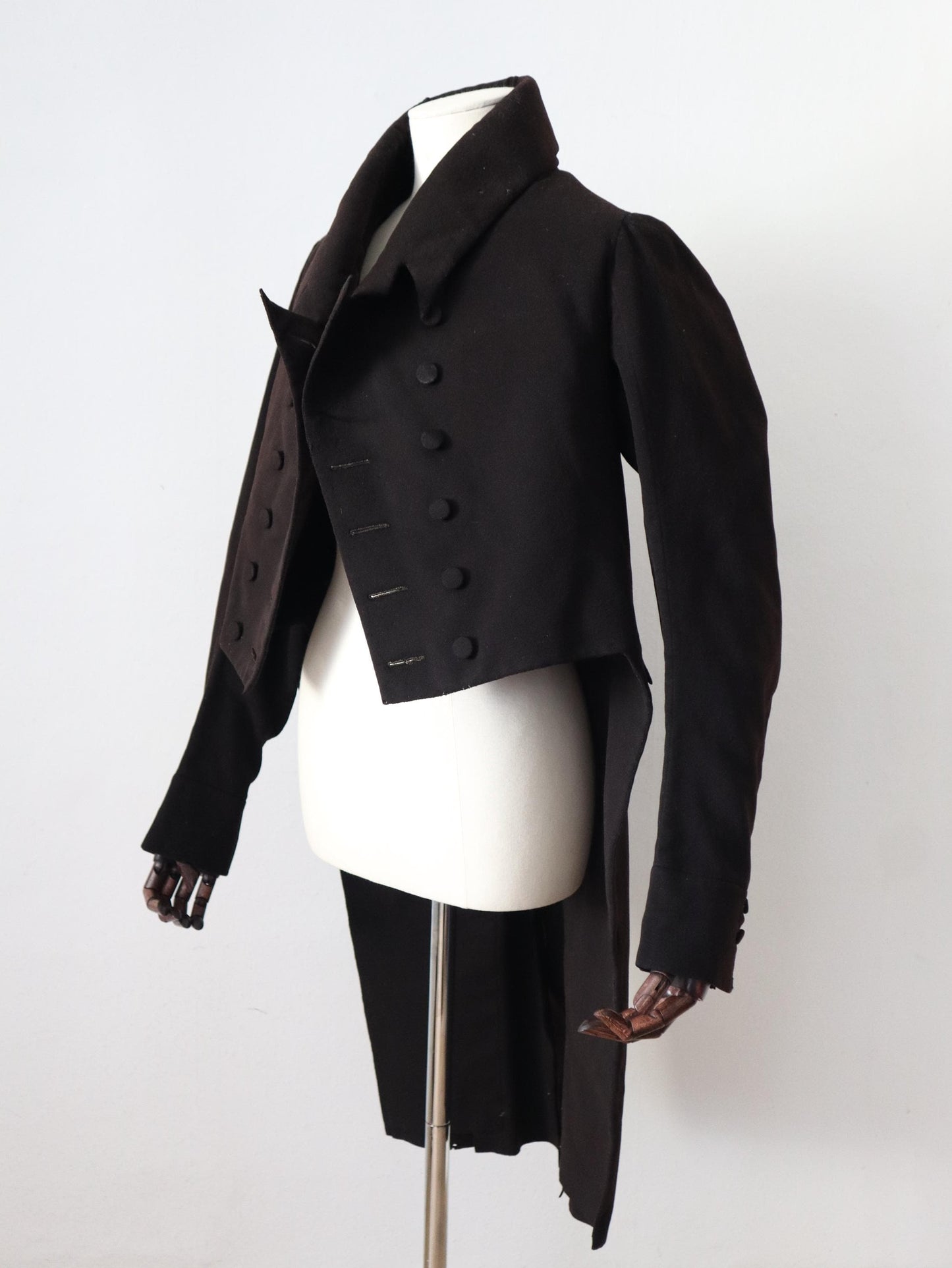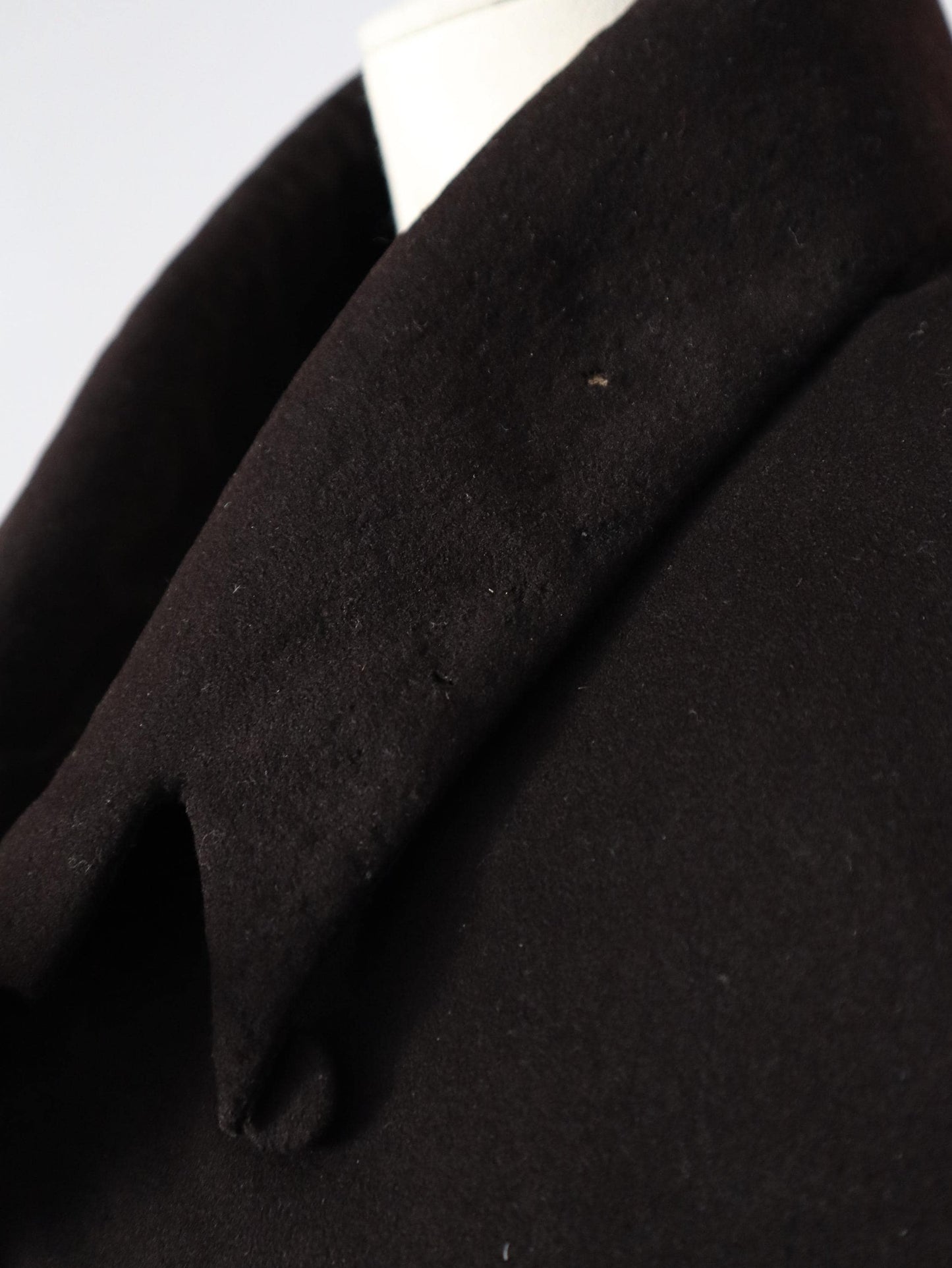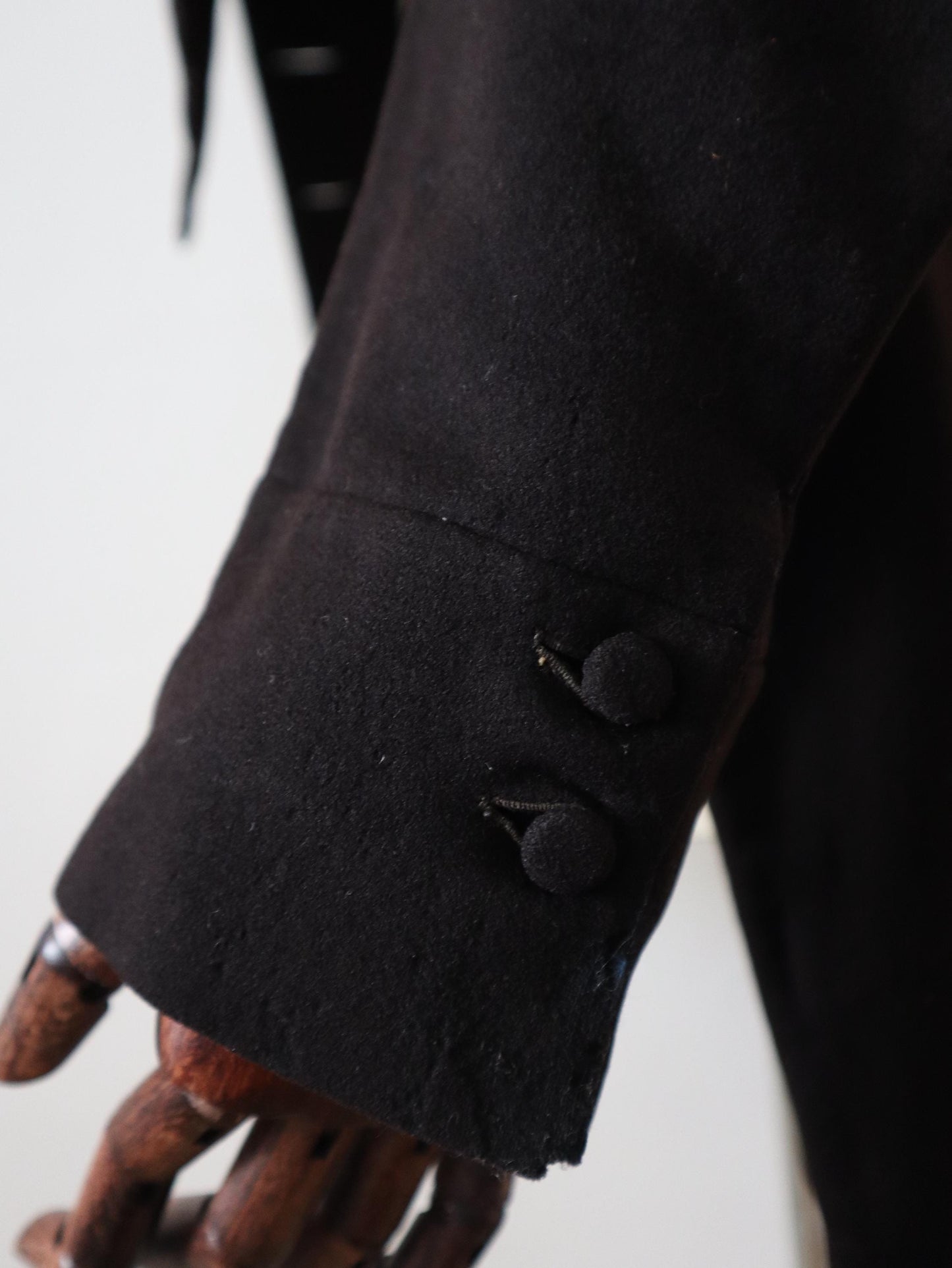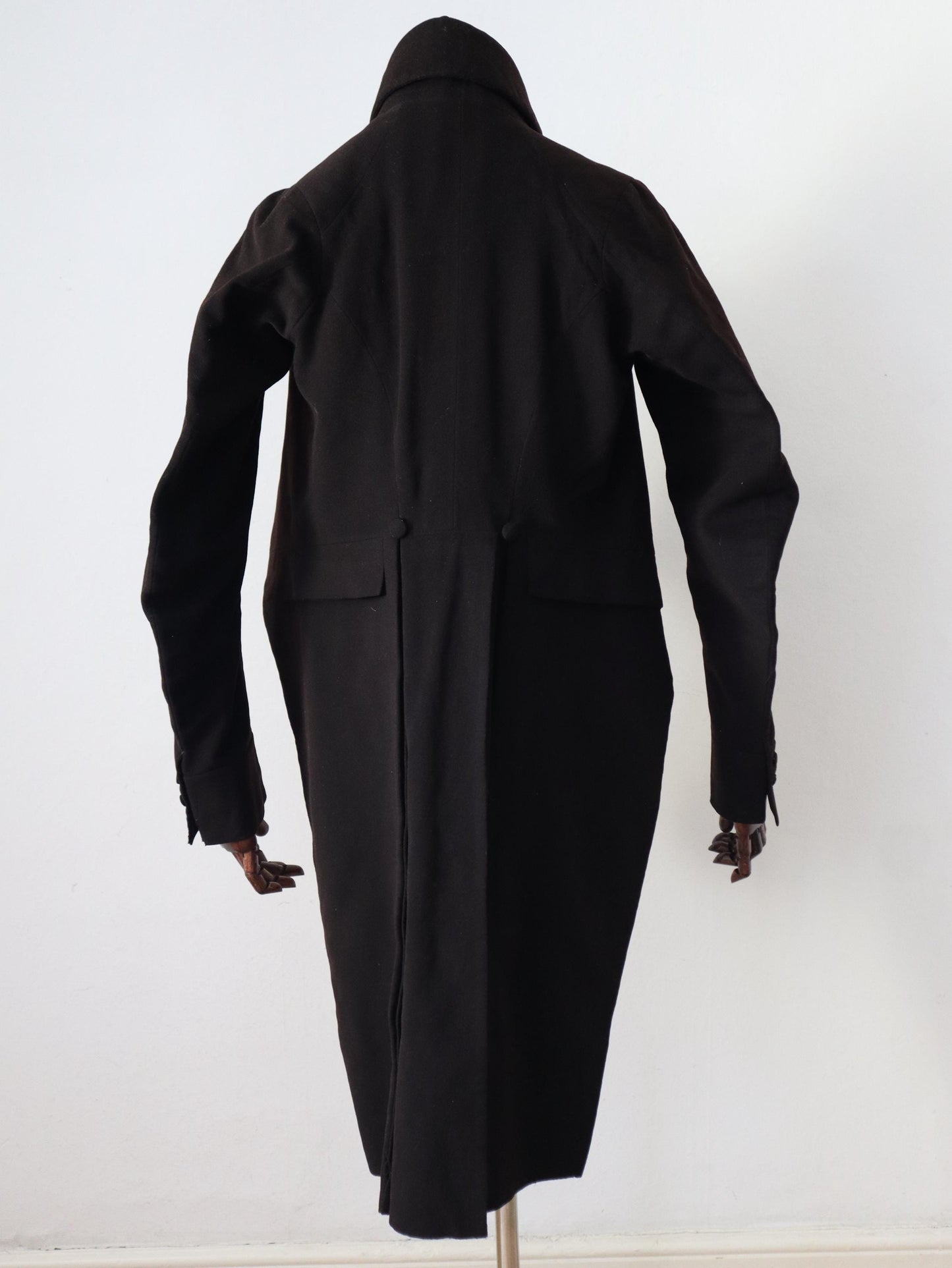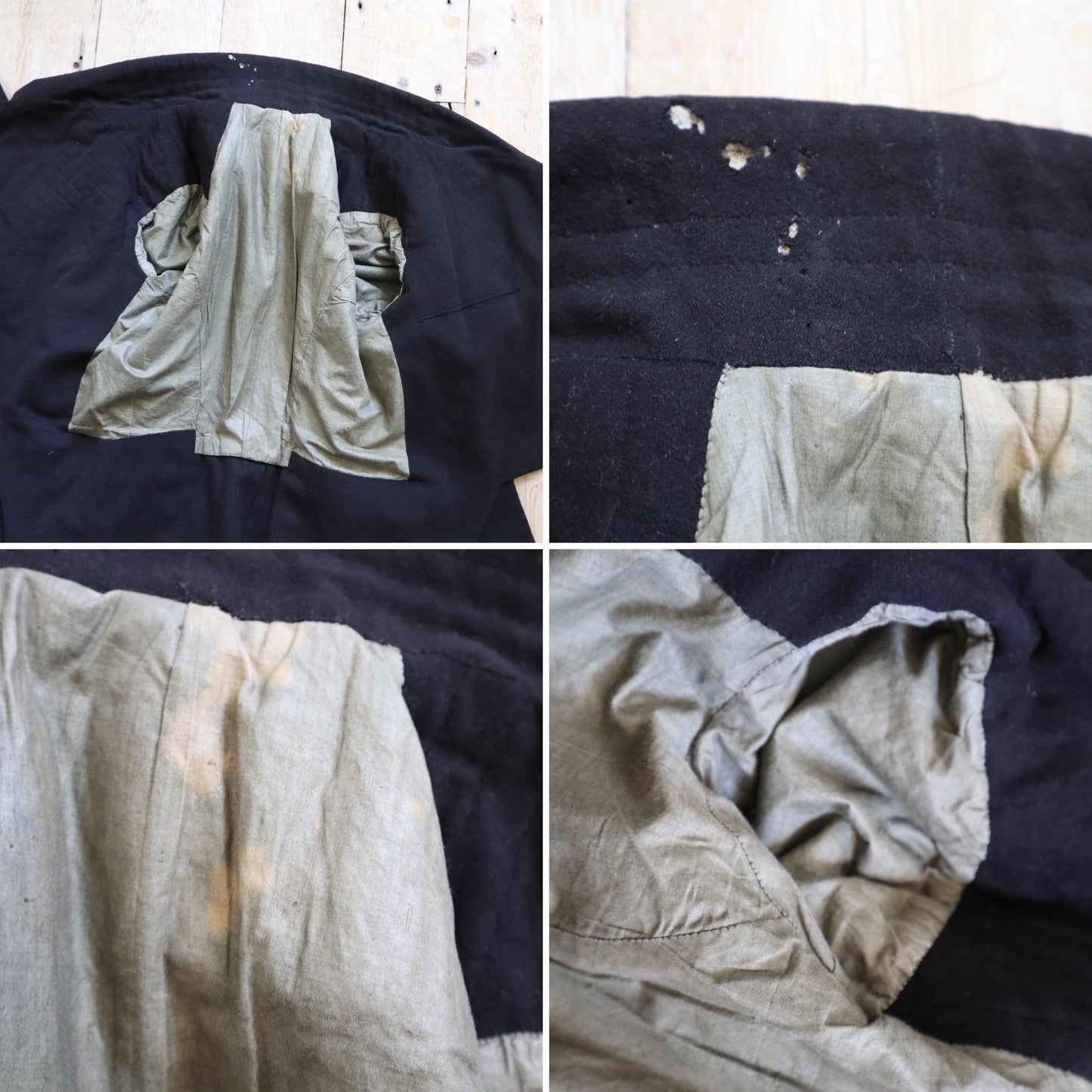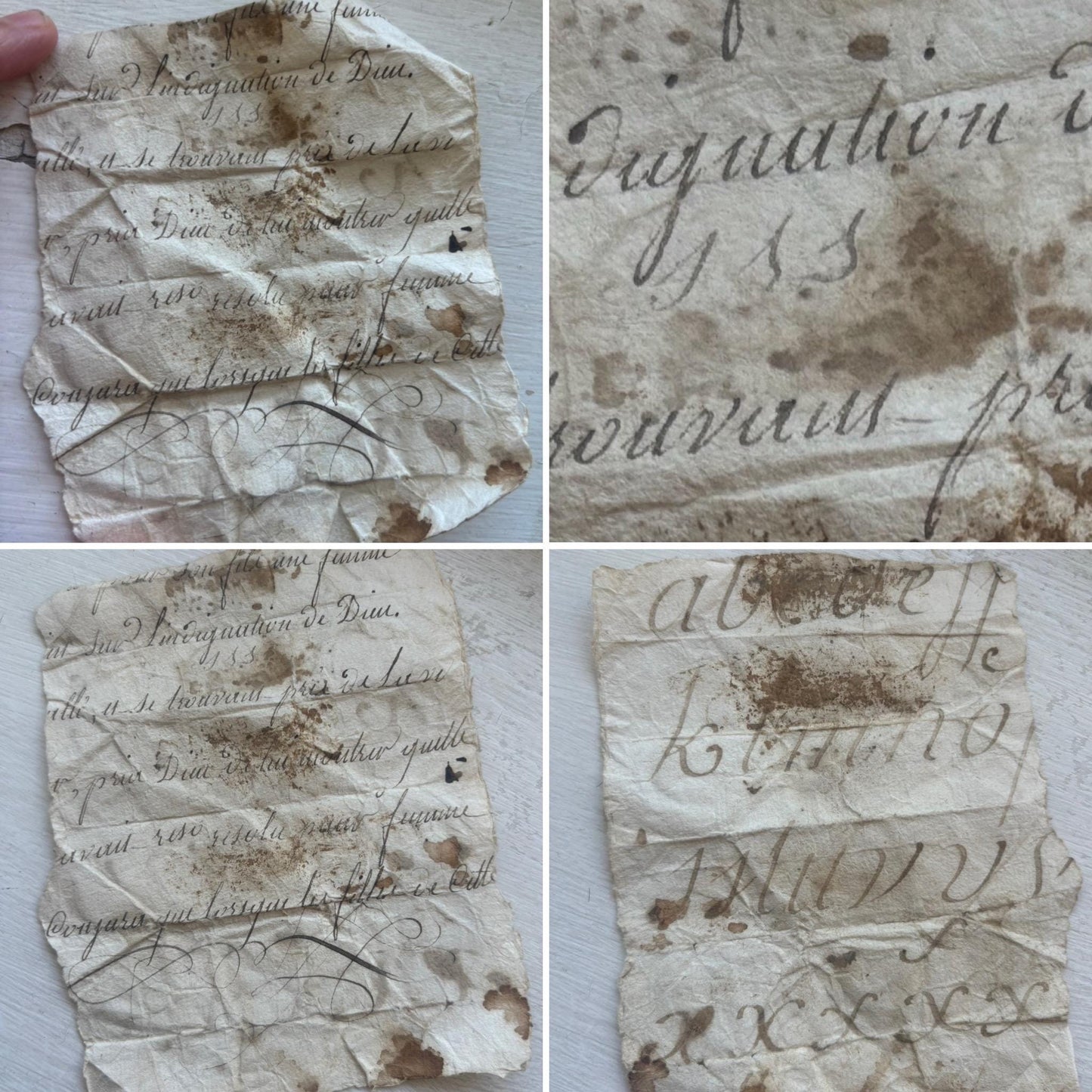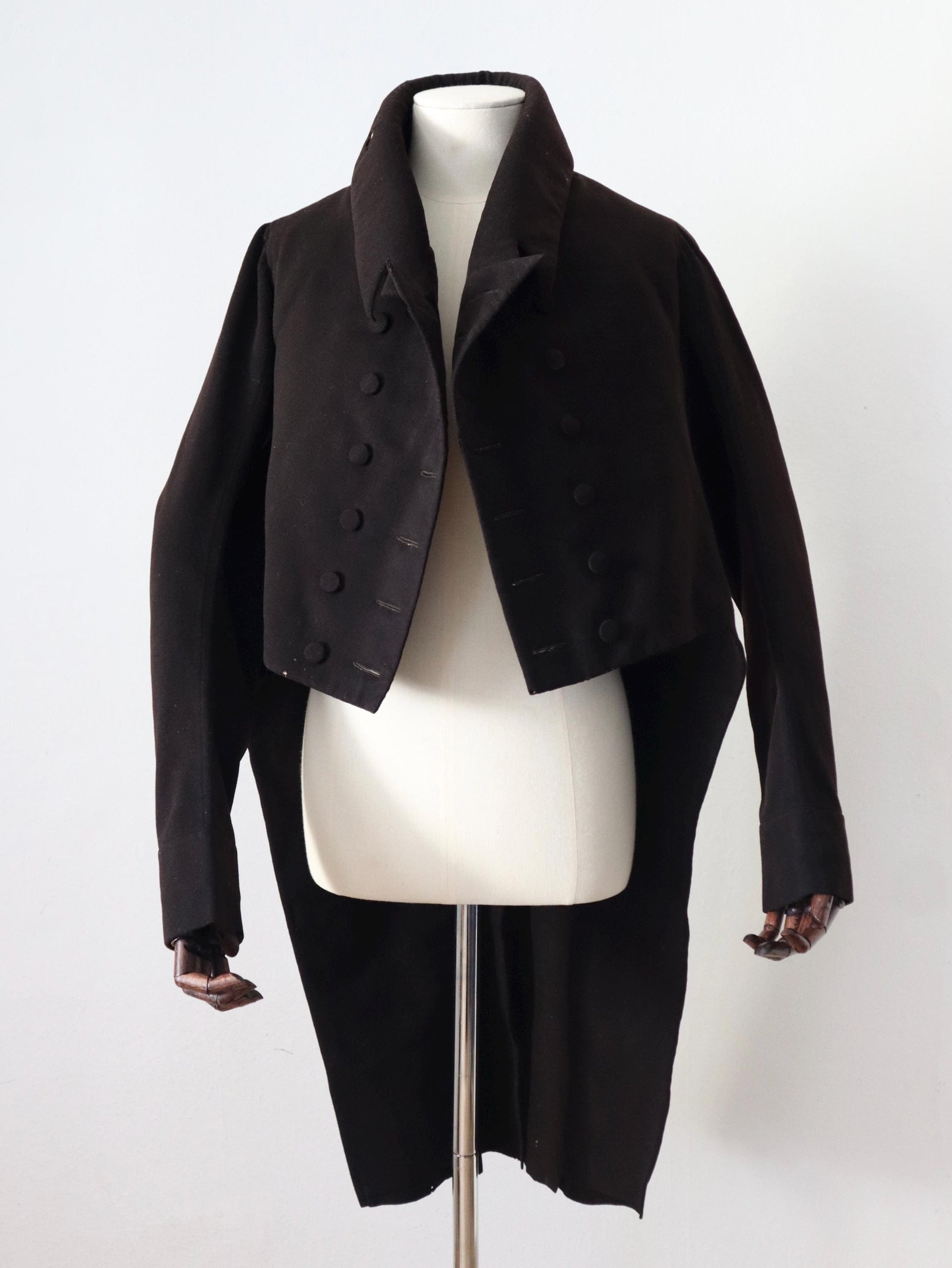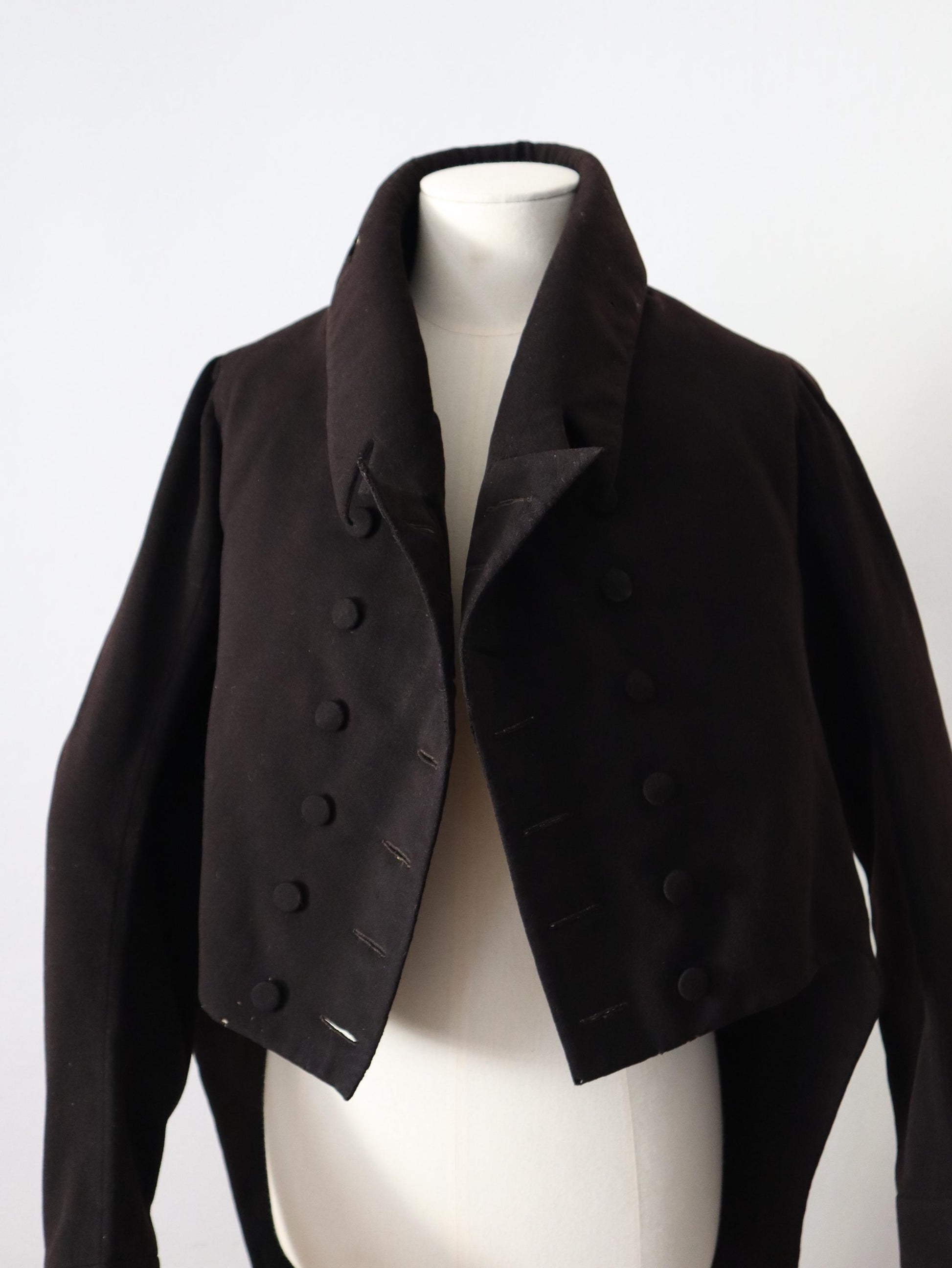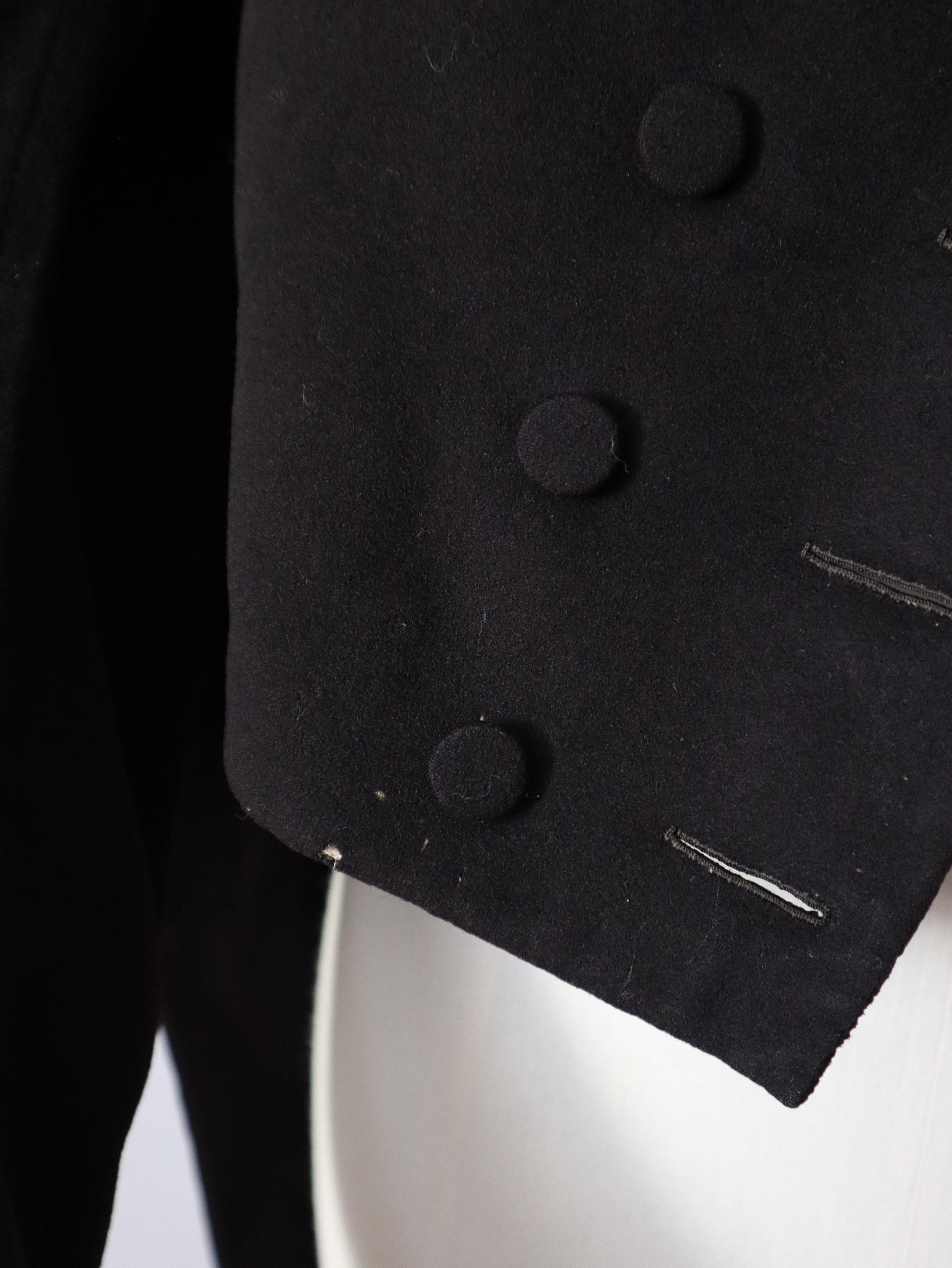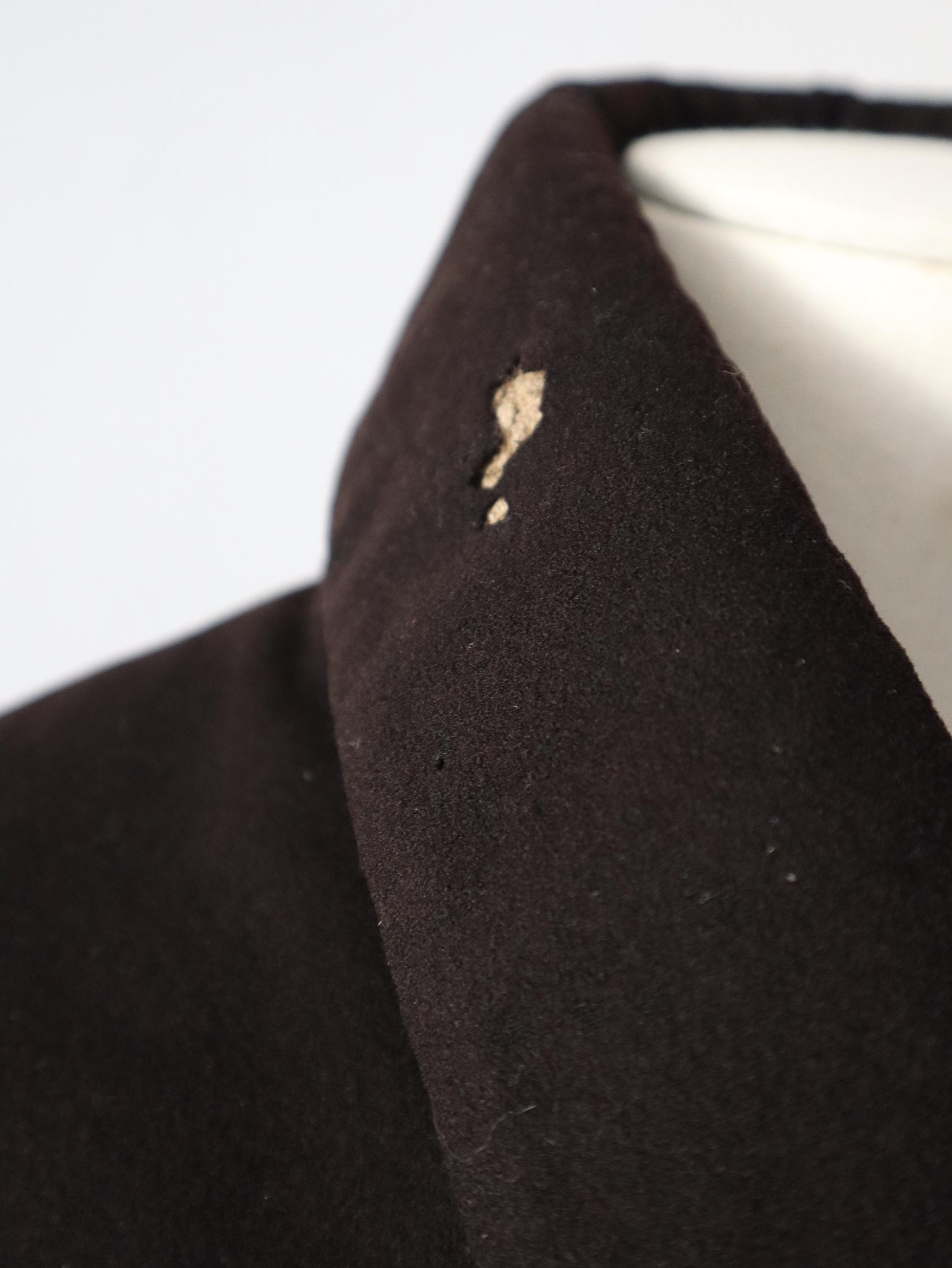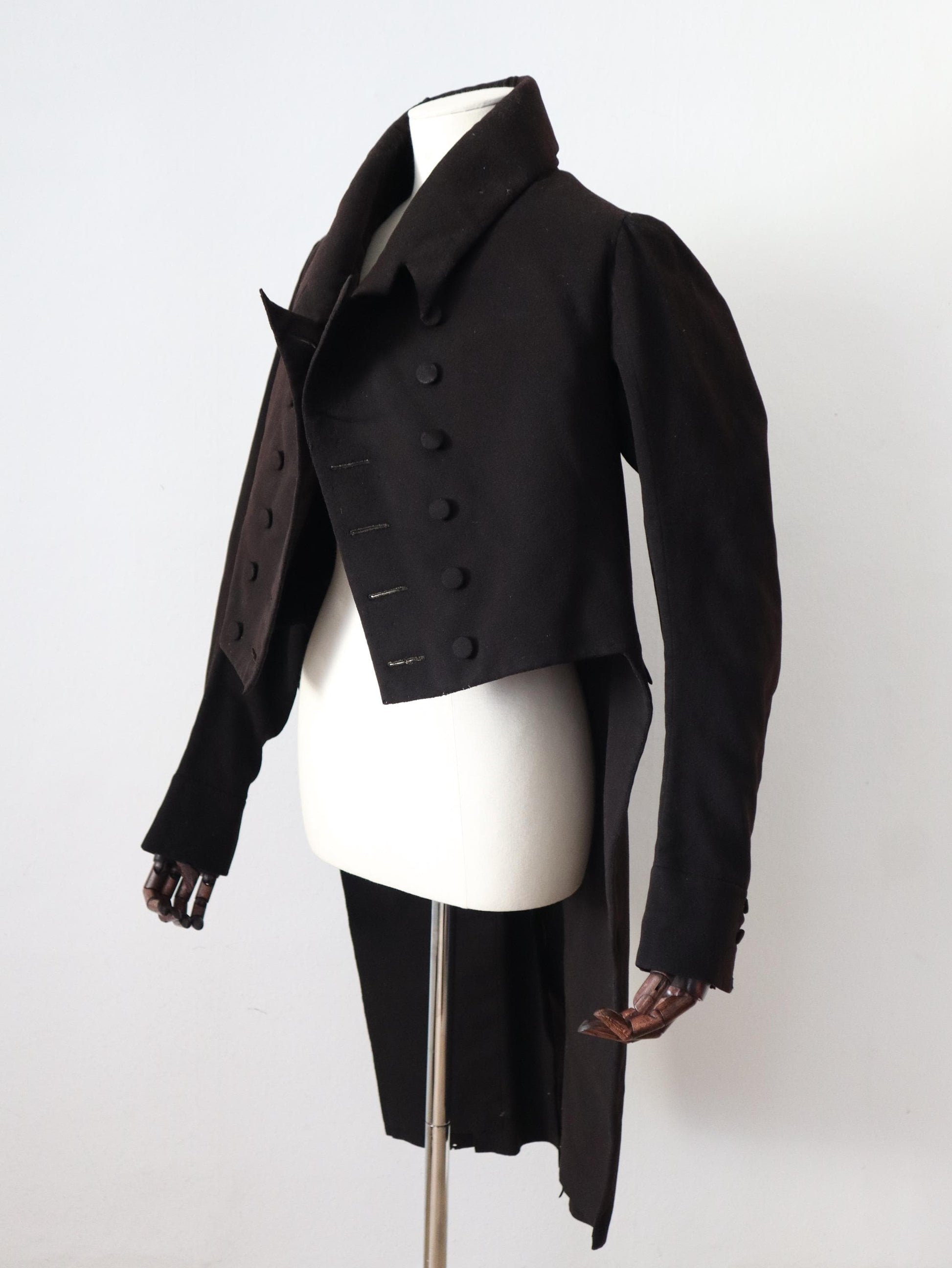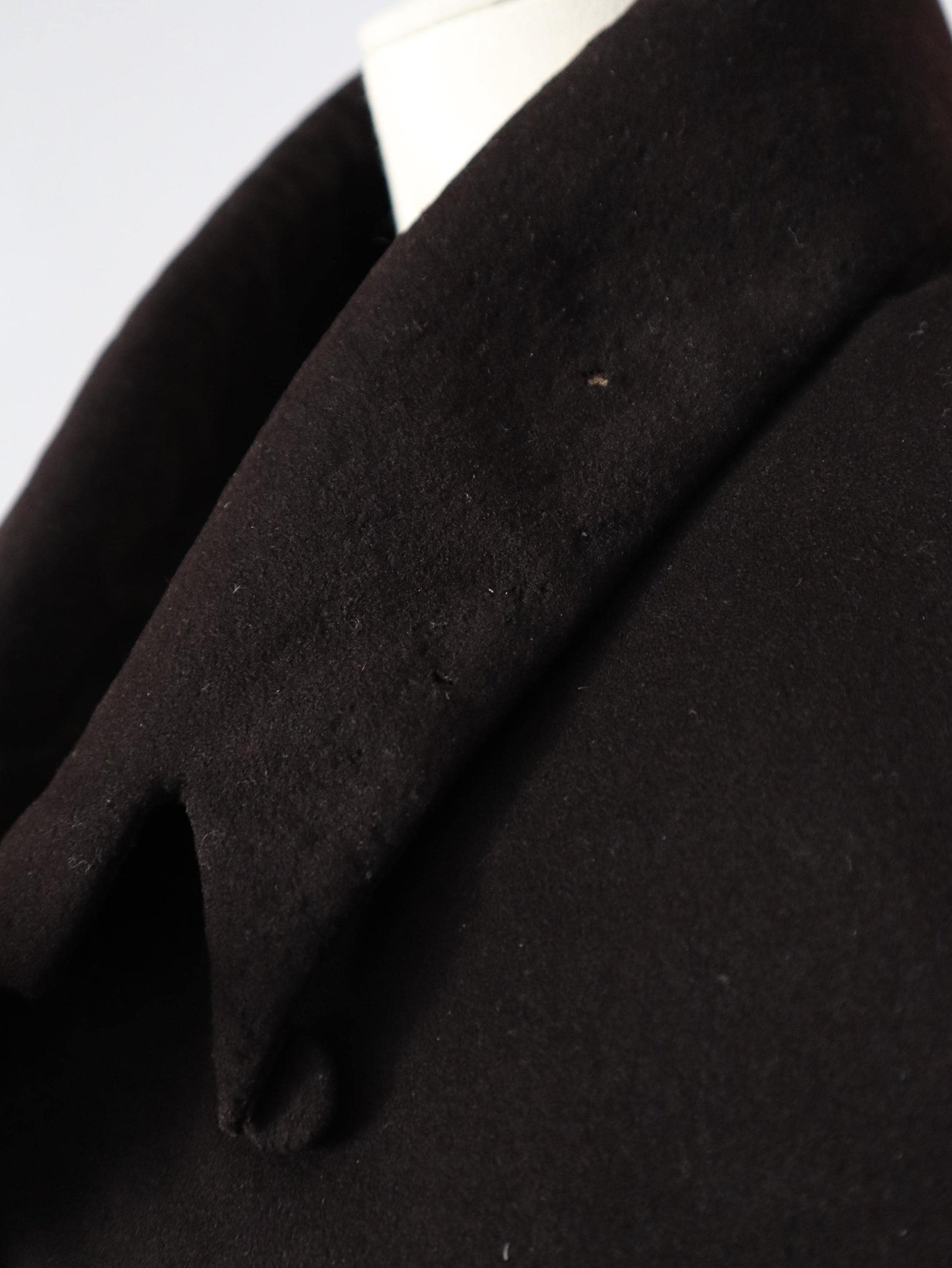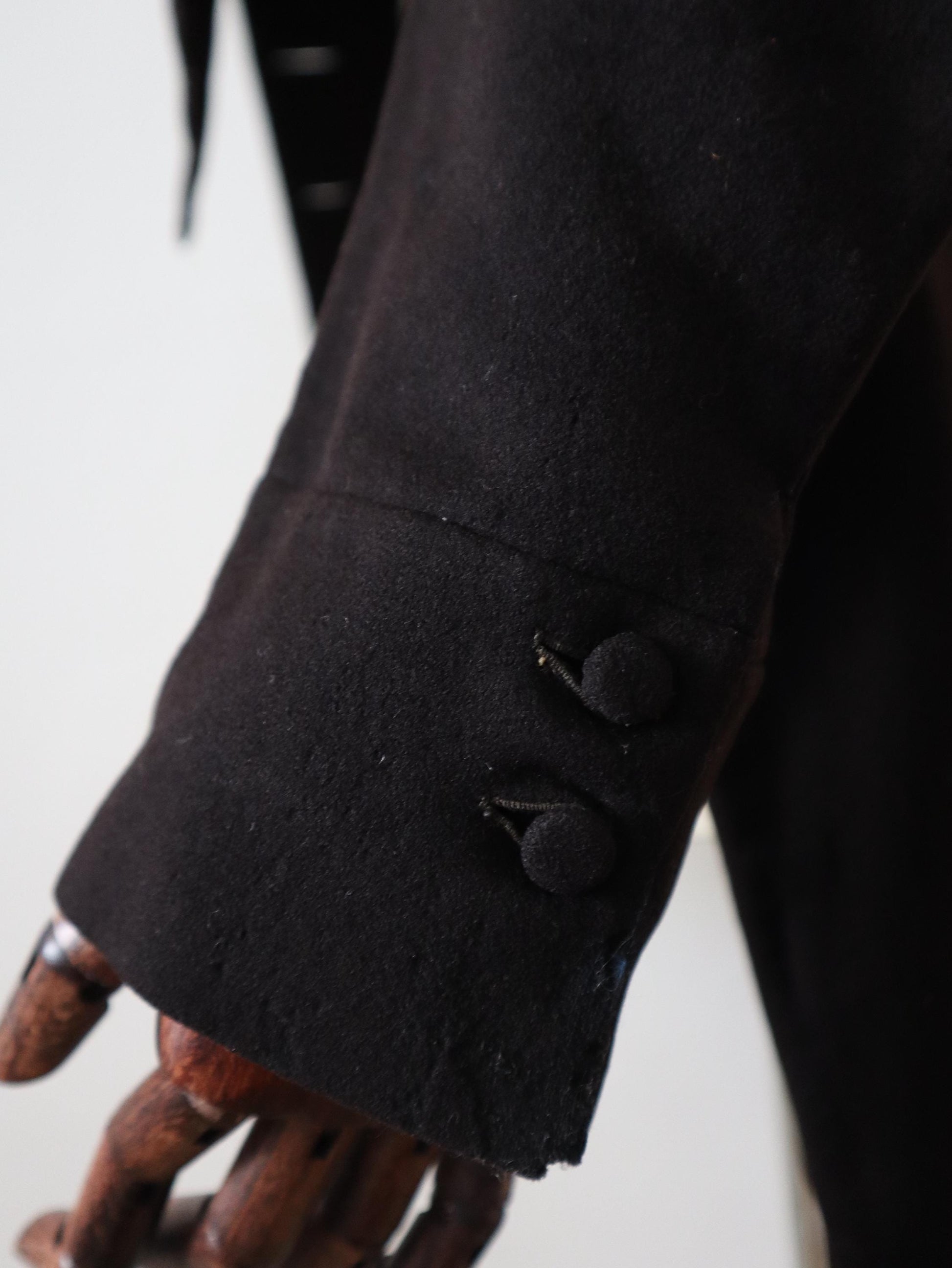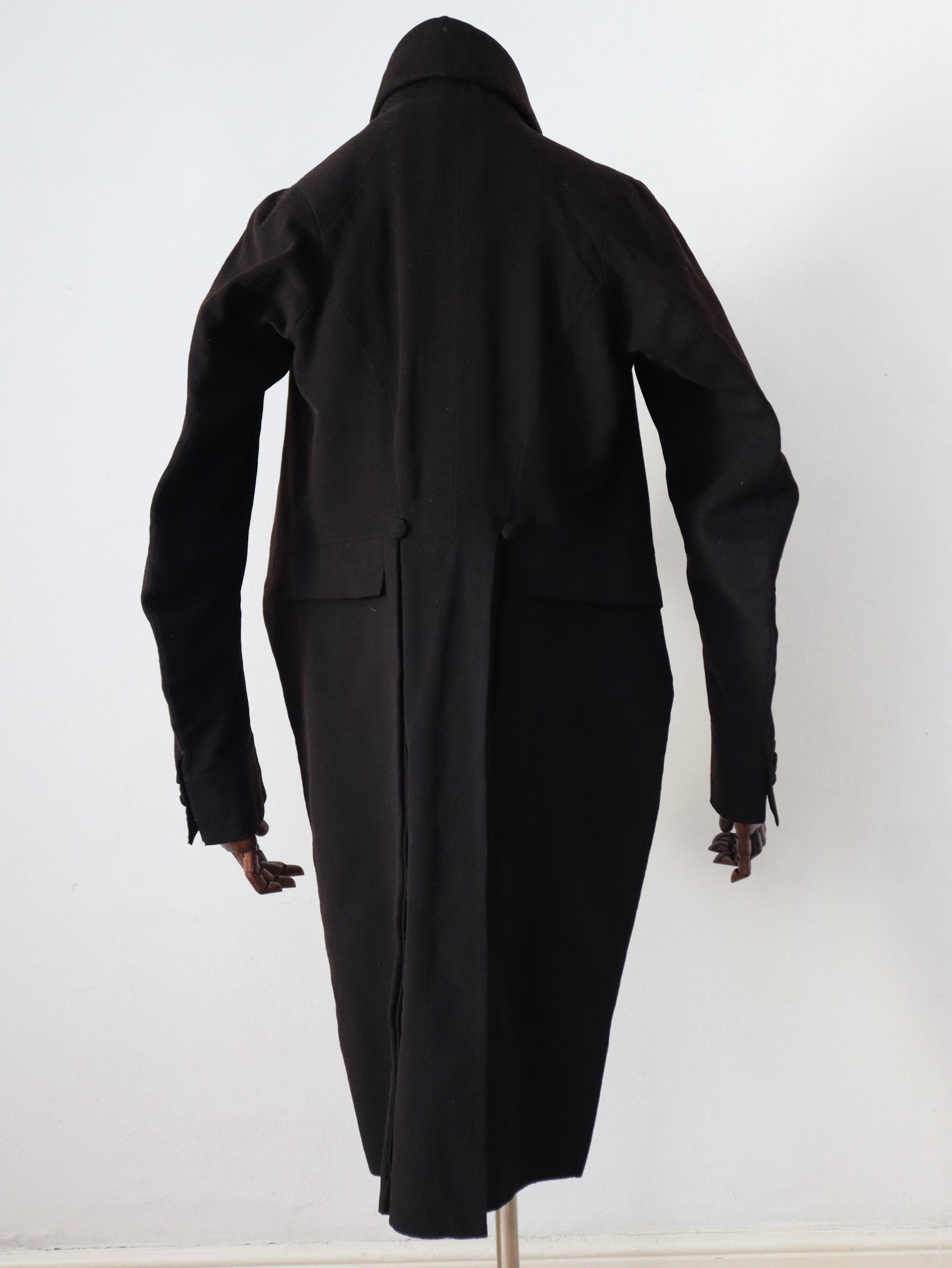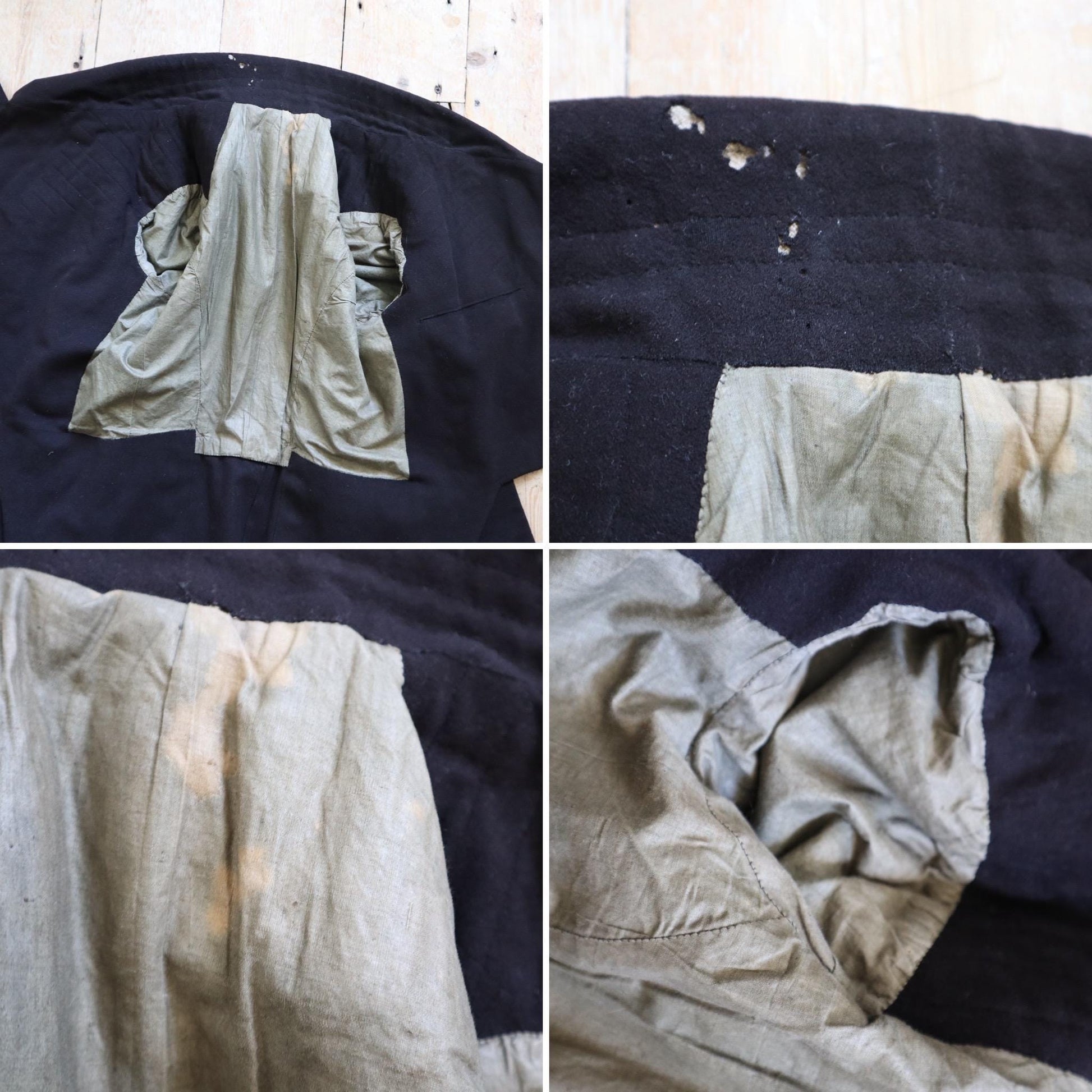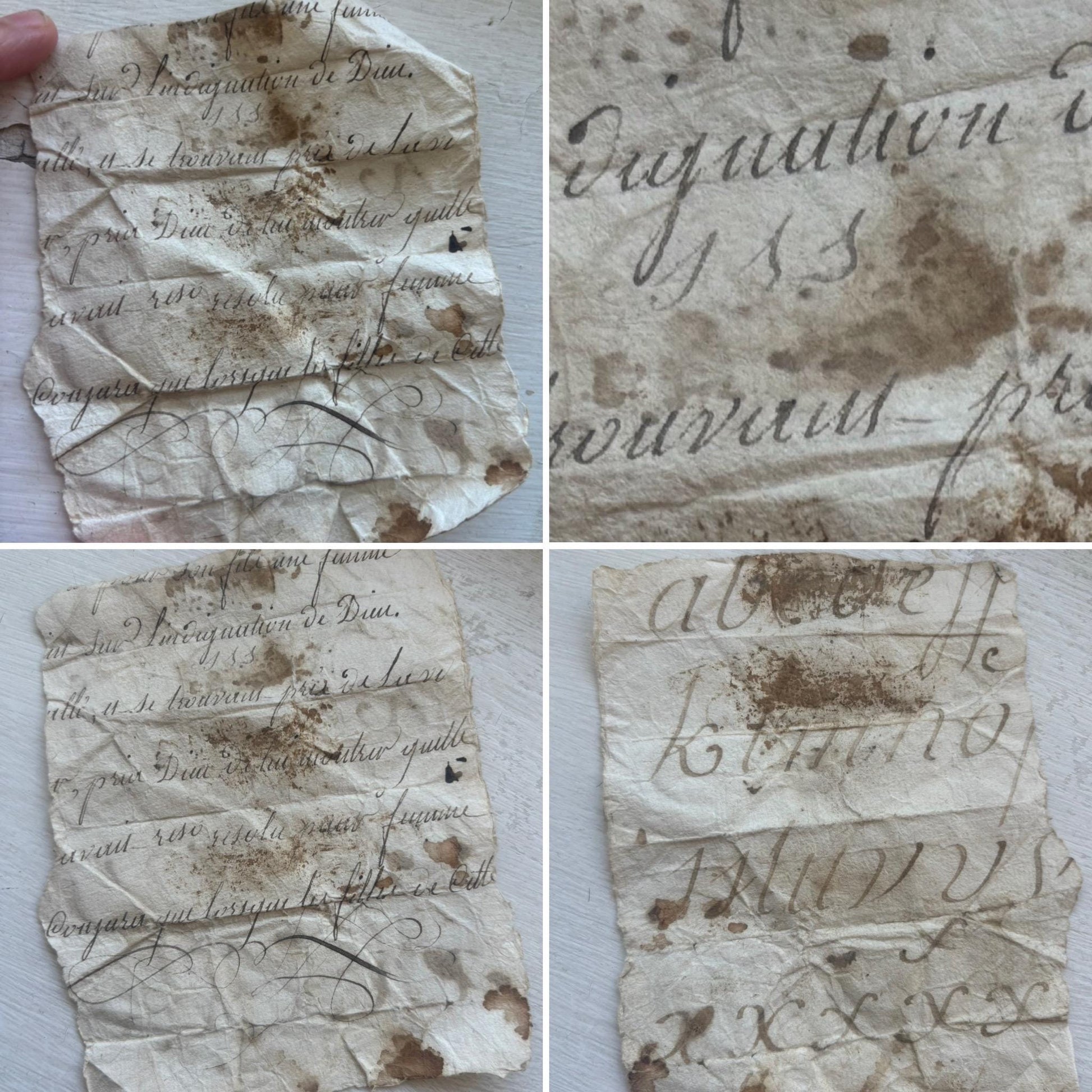Etsy
RARE Early 1800s French Black Wool Tailcoat Jacket REGENCY Double Breasted Jacket Coat M Notch Lapel
RARE Early 1800s French Black Wool Tailcoat Jacket REGENCY Double Breasted Jacket Coat M Notch Lapel
Couldn't load pickup availability
Early and rare 1800s French black wool tailcoat.
Finely constructed in black wool, with stepped M-notch lapels cut to a sharp, elongated point and an exceptionally shaped collar that gives the coat a striking, crisp silhouette.
The body and sleeves are lined in an almost muddy green coloured cotton, and the sleeves are finished with two buttons at each cuff. The coat is entirely hand stitched, most clearly visible in the lining.
Sourced in France by myself. I was very excited and delighted to find a folded handwritten French note, dating from the same period. This was discovered inside the interior pocket and will be included in the sale. One side of the note contains a carefully written alphabet, while the other features lines of religious or moral text in French, likely copied as part of handwriting exercises. The use of laid paper, brown ink, and the distinctive flourish at the foot of the text are characteristic of early 19th-century penmanship practice.
Tailcoats of this French origin and early date are exceptionally rare. I have not encountered another quite like this. Comparable garments are difficult to locate on the market today, and pieces of this type are more often found in museum collections than in private hands.
⸻
Measurements
• Underarm to underarm: 18 in (45.5 cm)
• Across shoulders: 15½ in (39.5 cm)
• Sleeve length: 23 in (58.5 cm)
• Front length (neck to hem): 19 in (48 cm)
• Back length (neck to hem): 40 in (101.5 cm)
⸻
Condition
The coat is in very good condition for its age: clean, well preserved, and without strong odours.
Flaws include:
• A small hole at the back of the left arm near the top.
• A cluster of holes around the neckline, including a larger one on the left, several smaller ones further inside, and another on the right.
• A hole under the left arm.
• A hole near the lower front edge by the buttons.
• A hole midway up the tails at the back.
• A few small holes at the lower back near the tails.
• Some light moth nibbling in scattered areas.
These are consistent with the coat’s age and use. Overall, it remains in excellent preservation for a garment of this period.
